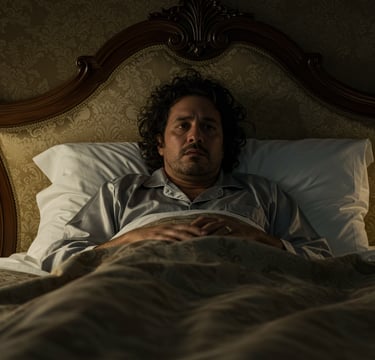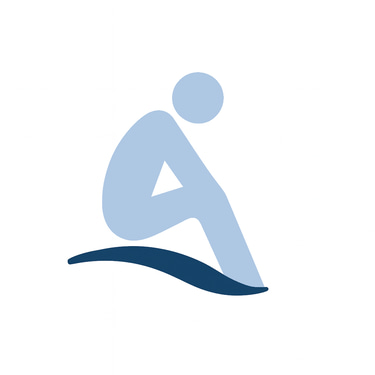When Rest Doesn’t Help: The Deeper Layers of Burnout
Blog post description.


When Rest Doesn’t Help: The Deeper Layers of Burnout
You’ve taken time off.
You’ve canceled meetings.
You’ve stayed in bed, gone on vacation, paused your inbox.
And still—something feels off.
The exhaustion is still there.
Your mind still feels foggy.
You’re not bouncing back.
You start to wonder:
“Is this just who I am now?”
“Why isn’t the rest working?”
Here’s the truth most professionals never hear:
When rest doesn’t help, it’s not because you didn’t rest hard enough.
It’s because rest doesn’t fix the root cause of burnout.
What People Get Wrong About Recovery
The world tells you to:
Sleep more
Meditate
Take a vacation
Set better boundaries
“Unplug”
And yes—those things matter.
But they assume that burnout is just fatigue.
In reality, burnout—especially in high-functioning professionals—is often the result of:
Emotional misalignment: your work no longer reflects your values
Chronic self-suppression: hiding anxiety, shame, or fear to stay composed
Over-identification with output: equating self-worth with productivity
Survival systems: perfectionism, overfunctioning, hypercontrol, and emotional isolation
Rest doesn’t fix that.
Repair does.
Why You Still Feel Off After "Doing All the Right Things"
Because rest is a surface-level intervention.
Burnout happens deeper.
You can rest your body and still carry:
Emotional vigilance
Internalized pressure
Unspoken grief
Chronic guilt for not “doing enough”
Parts of yourself you’ve buried for the sake of professionalism
It’s not your fault.
But it is your system asking for something more.
This can also explain why even joyful activities don’t feel good anymore. Hobbies start to feel like chores. Social time drains you. Even downtime becomes something to “get through” rather than enjoy. That’s not laziness or disengagement—it’s disconnection. And disconnection can’t be fixed with more to-do lists labeled “self-care.”
Burnout recovery is not about doing more. It's about recovering your access to feeling.
What Therapy Does That Rest Can’t
Therapy isn’t about convincing you to slow down.
It’s about helping you understand why you can’t feel restored, even when you do.
It’s about giving language and structure to what your nervous system has been trying to communicate through fatigue, avoidance, and emotional flatness.
We work on three levels:
• Neurological (EMDR Therapy)
We target moments your system coded as high-pressure, unsafe, or shame-inducing—often rooted in earlier roles, family dynamics, or work culture. EMDR helps uncouple those experiences from your current stress response.
• Internal (Parts Work)
We map the parts of you that are still running:
The high performer
The critic
The appeaser
The one that won’t allow you to stop
And we build leadership over them, so you’re no longer run by an old script.
• Existential + Identity-Level
We explore what burnout has disrupted:
Who am I when I’m not producing?
What does success mean to me now?
What happens if I listen to my actual needs?
This is how real recovery begins.
It’s also how you start to recognize your internal experience—not just your output—as valid. Because many high achievers were never taught that how they feel matters. Only what they deliver.
And when that’s the case, rest feels useless. Therapy helps undo that conditioning.
A Real Story, Told Many Ways
When Ava, a 36-year-old project manager at a global tech company, finally reached out for therapy, she had just come back from her second extended leave in a year. She had done everything right: stepped away from work, gone on a yoga retreat, booked time with friends, and even logged off completely. But still, she felt off.
“Everyone around me kept saying I just needed a break,” she said. “But I took the break. I did all the things. And I still wake up feeling like I’m dragging a weight behind me.”
In therapy, Ava discovered something she had never said out loud: she didn’t know how to feel safe unless she was producing. Rest felt physically uncomfortable. Unproductive. Exposed.
Her internal system had learned, over years of high achievement and silent emotional labor, that slowing down wasn’t relaxing—it was dangerous. And the longer she stayed still, the more anxious she became.
Using EMDR and parts work, we traced that reaction to memories of early work trauma—times when she had been punished for not being “on” or had been told rest was laziness. Her nervous system had recorded those moments as warnings. So even when the external world said “rest,” her body stayed in alert.
The breakthrough didn’t come from another break. It came from internal reorganization.
Now, Ava still works hard. But she does so with internal leadership—not panic. She knows when to say no. She knows how to pause without spiraling. And perhaps most importantly, she no longer needs to be in motion to feel safe.
Her rest finally works—because she’s not using it to escape. She’s using it to restore.
What Clients Say Once They Begin the Real Work
“It’s not that I’m more rested—I’m less afraid.”
“I feel like I came back to myself.”
“I still work hard—but I don’t hate it anymore.”
“I don’t feel like I’m faking it through the day.”
“I finally feel like I have an internal pause button.”
These aren’t just quotes. They’re milestones. The turning points where something shifts—not because the client learned a new hack, but because they stopped overriding their system.
Burnout doesn’t respond to logic. It responds to care. Precision. Presence. And consistent recalibration.
This isn’t about doing less.
It’s about no longer needing to run from yourself to keep going.
Tired of Feeling Tired—Even After the Break?
Book a free 30-minute Zoom consultation.
This isn’t therapy for people in crisis. It’s therapy for people who know something deeper is off—and are ready to explore what that means.
Schedule Your Consultation →
